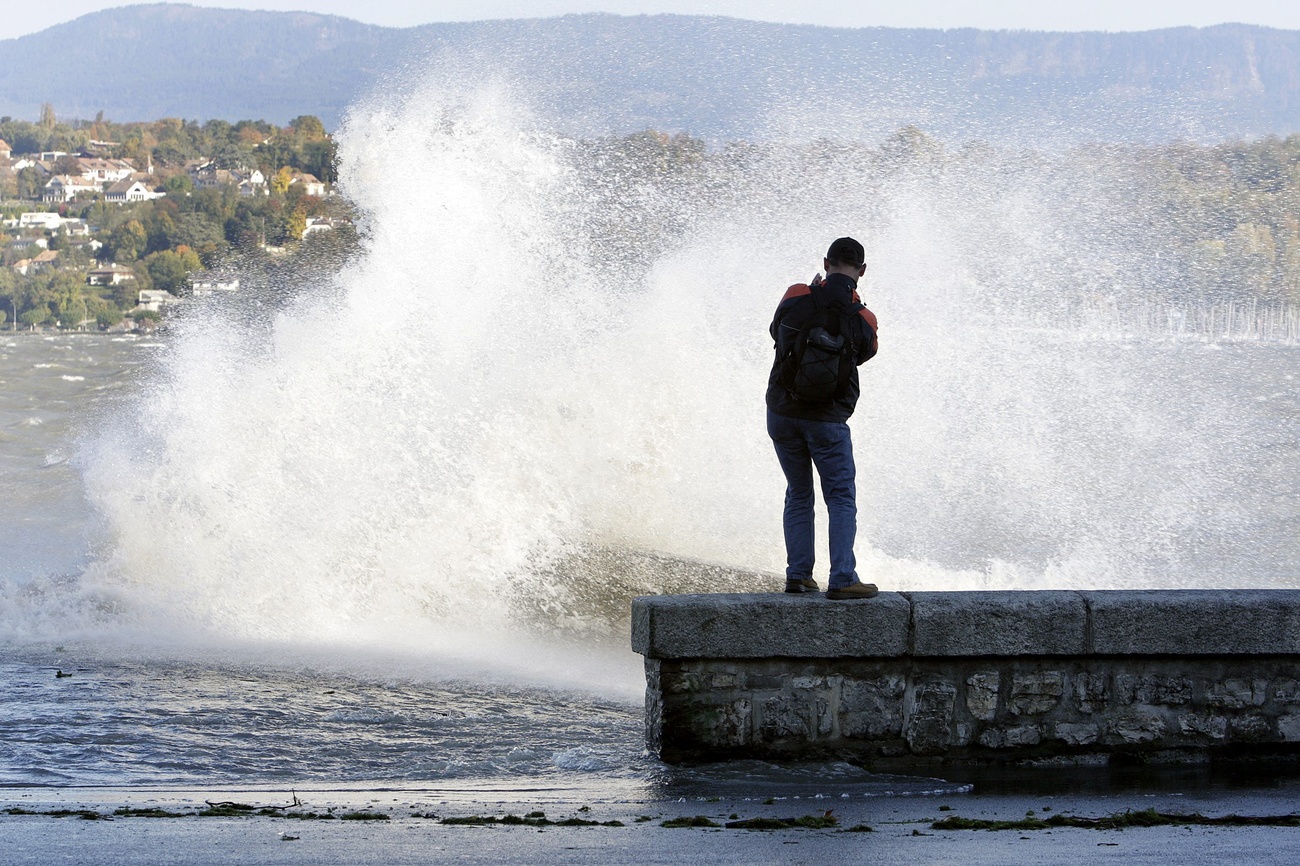Using animal instincts to forecast weather

Not sure when there will be enough snow to go skiing this winter? The Swiss "weather prophets" have the answer based on reading cows horns and mice tails.
The unique predictions made by the weathermen are Switzerland’s version of the legendary long-range forecasts of the Farmers’ Almanac in the United States.
It is a cold, clear December morning in the village of Rothenthurm in central Switzerland and a thin crust of snow covers the ground. Martin Horat enters the cowshed of a neighbour’s farm.
Reading tea leaves would be too simple for the 61-year-old who, in his own words, was born with the gift for weather forecasting.
Instead, with the farmer’s help, he takes a cow by the horns and begins to file, scrape and polish, eventually revealing a set of parallel dark lines close to the skull (see video).
Sizing up the length and width of the markings, Horat confidently exclaims that Switzerland is in for a rather mild winter.
“It won’t be as cold as it was in November.” But he adds: “there will be enough snow”.
“April 10 will be a beautiful day,” Horat continues, studying the smallest line, which elicits disbelieving chuckles and headshaking from fellow prophet, Martin Holdener.
“He’s wrong,” says Holdener. “It will rain on April 10.”
His prediction is based on a secret, women-watching formula.
He also uses field mice.
Long or short?
“You look to see if the mouse has a long or short tail,” he says while laying traps in a field in the hilly countryside of canton Schwyz, where the weather prophets are at home.
“You have to know whether the tail is long due to the mouse’s age or whether it has been bitten off,” he explains earnestly. “If the mouse has developed normally, a short tail is a sign of mild weather to come, and a long, bushy tail means it will be a hard winter.”
Horat and Holdener are two of the six weathermen of the “Inner Schwyz Meteorological Catholic Association”, a club founded in 1947 based on a local tradition of long-range forecasting that dates back to the 18th century.
Their methods are unusual, at times chauvinistic, and the resulting predictions not always reliable. But the prophets have developed a nationwide following. The club has around 2,500 members who flock twice a year to Schwyz to hear the folksy forecasts.
“Chosen”
The prophets are not elected but “chosen”, according to Holdener, after proving to have a natural-born ability to predict the weather.
“I knew when I was only three weeks old that I had this talent,” says Horat telling a story of how his parents noticed his strong reactions in advance of a change in the weather.
“And before the very dry, hot summer of 1947, I had a lot of sleepless nights. That was a sign,” adds the man who claims to have earned his living over the years as a cow dentist, cow horn polisher and scythe salesman.
“We don’t need to use computers or satellites,” Horat adds, casting scorn on the national weather service, MeteoSwiss. “They make only five-day forecasts, and are often wrong with those. We predict the weather a half year in advance.”
“There are many people in the world who don’t understand anything about the weather, but we do since we’re the chosen ones,” boasts Holdener, who is a farmer and forester by trade, and, he adds, the son of a man who was a professional mouse catcher.
“We share our knowledge, which helps people plan their summers and winters.”
Crystal ball cows
Farmer Meinrad Beeler is willing to let Horat use his cows as crystal balls, but is not necessarily a believer.
“They aren’t always right,” he admits, before correcting himself to be more polite. “At least one of the six prophets is bound to get it right.”
“We are not allowed to prophesise natural disasters because we don’t want to scare people,” Holdener says when asked why the prophets were unable to foresee the catastrophic flooding that affected large parts of Switzerland last August.
Horat claims he had predicted the flooding but was told by the publisher of the forecasts that his entry was too long and therefore had to be shortened. He removed the corresponding passage.
When asked about his most memorable forecast, the older of the two prophets says: “It was my prediction for the month of February during a leap year. I claimed that on February 29 the sun would set in the west, and was proven right.”
“We don’t take our work too seriously,” Horat says. “We also want to be entertaining.”
swissinfo, Dale Bechtel in Rothenturm
There are currently six so-called “weather prophets” in canton Schwyz who base their forecasts on observations of a number of natural phenomena, keeping many of their methods secret.
Founded in 1947, their club has developed a big following, with about 2,500 members nationwide.
In contrast, the publishers of the Farmer’s Almanac in the United States claim to use a nearly 200-year-old formula taking into account “astronomical and atmospheric signs and conditions”.

In compliance with the JTI standards
More: SWI swissinfo.ch certified by the Journalism Trust Initiative












You can find an overview of ongoing debates with our journalists here . Please join us!
If you want to start a conversation about a topic raised in this article or want to report factual errors, email us at english@swissinfo.ch.